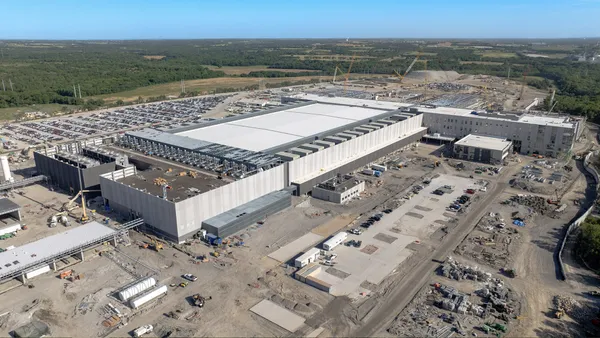Construction executives are increasingly embracing the potential of AI to drive innovation and efficiency, according to a panel session during the New York Build Expo at the Javits Center in New York City last month.
For example, Poliark, a software company with offices in New York City and Turkey, uses its AI algorithms to generate project cost estimates and timelines, according to its founder and CEO Eda Erol. But Erol highlighted AI’s role across the construction lifecycle, particularly design.
“Let’s think of a simple design process. You need to start with a 2D within a software, then you need another software for 3D, another one for detailing, you need to know consultancy, pricing and then you need rendering programs,” said Erol. “I cannot imagine how much you are spending with those products. AI can take over the majority of the process.”
AEC firms also use AI tools to assess the environmental impact of various construction materials, optimize resource usage and minimize carbon emissions throughout the project lifecycle. Due to these benefits, many more construction firms are beginning to ask how to adopt AI into their workflows.
At the LiRo Group, a Syosset, New York-based AEC firm, that includes using AI for infrastructure mapping services across projects, said Aditi Patel, LiRo’s vice president.
“Up until now, the traditional process has been you have a person going out and looking through the network of roads and capturing information, taking photographs, documenting all the defects, capturing broken signs, things like that,” said Patel. “Now, you can just mount this scanner on the car and drive through your city and it’s real-time scanning the town but also leveraging AI to identify problems early on. The value it brings is you’re receiving more accurate information in significantly less time.”
This technology is being used more often on infrastructure inspections, she added, particularly with bridges and tunnels.
“AI does a really good job of capturing these defects because essentially it’s using computer vision and you can train the algorithms to identify certain types of known defects in your structures,” said Patel. “That is to me a really good successful case study.”
Designing with AI
In the mid-term, there’s also an opportunity for AI to further augment the design process, said Zak Kostura, associate principal at Arup, a London-based design services firm.
“We’re all reliant on a lot of tools that take a long time to run and AI, I think what we’re seeing, is going to be able to replace that, where you don’t actually have to run that CFD program,” said Kostura. “The results are much more immediate.”
CFD, or computational fluid dynamics, is used as an advanced airflow modeling method and can be used to predict airflow patterns, heat distribution and contaminant transportation in and around buildings. CFD serves a crucial function in building a thermally-conformable, healthy and energy-efficient building.
Kostura also added that AI can be used to help clients from a decarbonization standpoint.
To that end, Arup recently collaborated on an office fit-out in New York City for the Natural Resources Defense Council, aiming for a net-zero office setup. Taking into account different design decisions, there were about 275 billion possible permutations, said Kostura. To analyze that vast solution set, Arup used AI to significantly reduce the time needed to evaluate those options.
“We got so efficient that we said, ‘why don’t we bring this to portfolio clients?’” said Kostura. “Now, all of a sudden, we’re saying we could actually run the same genetic algorithm we already have on New York City, and see what are the policy decisions New York City could do that would incentivize people to make the most impact on reducing carbon footprint in the city.”
Safety and efficiency on the jobsite
The panel also explored how AI can revolutionize safety protocols on construction sites. For example, predictive analytics powered by AI can identify potential safety hazards and prevent accidents.
From detecting near misses to even sensing threats like gunfire, AI-driven technologies have the potential to significantly enhance safety standards in the construction industry, said Charles Esteves, director of preconstruction at Consigli, a Milford, Massachusetts-based general contractor.
“[Computer vision] is a good example,” said Esteves. “On very specific tasks — like setting up security cameras, [checking] are hard hats on, count[ing] delivery trucks — we’re seeing some success there.”
Another use case is during a request for information, a construction process that asks for clarification about documents, drawings, specifications or other project conditions. With AI, this can streamline the process and cut down on potential waiting time, said Patel.
“You can basically use the easy prompt to ask AI questions and as long as AI has access to that information, it’s able to break it down and simplify and provide you that information in simple dialogue,” said Patel. “That is groundbreaking. Right now, if you’re responding to an RFI, you have to get in touch with different teams, find out what’s the details, and that can take hours or can take days.”






















